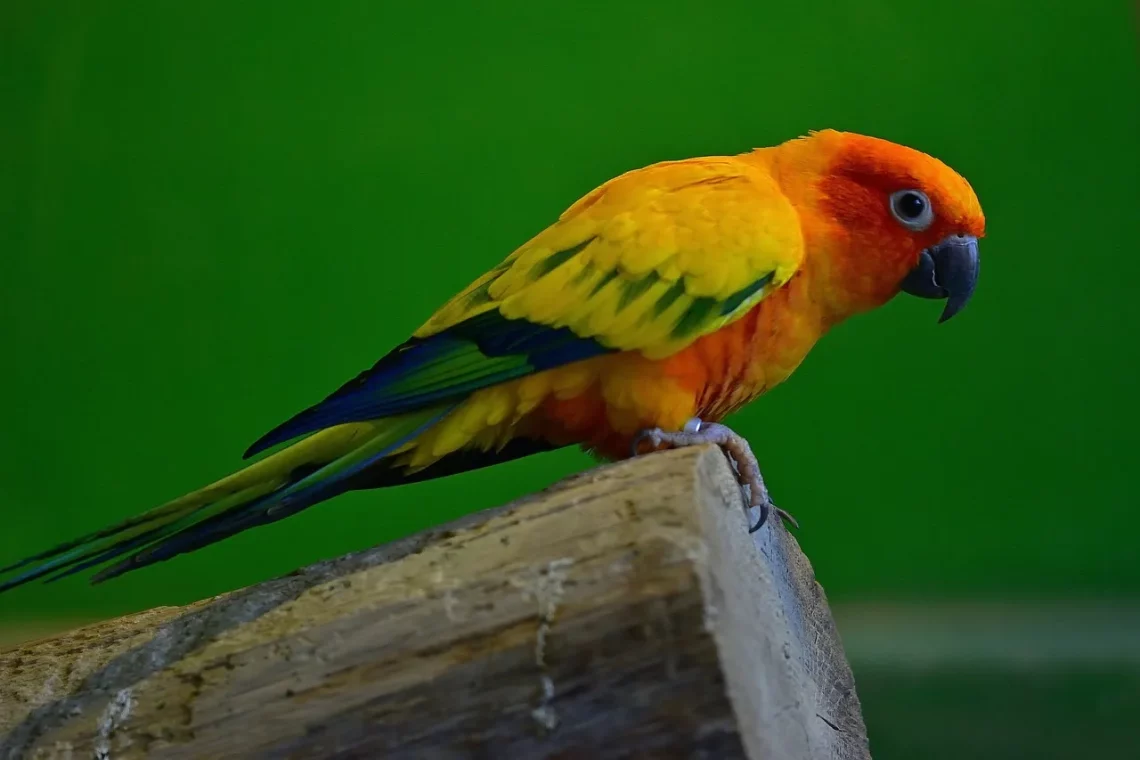
Understanding the Plain Parakeet: Care, Traits, and Habitat Insights
The Plain Parakeet, also known as the Green Parakeet, is a captivating avian species that has garnered the attention of bird enthusiasts and pet owners alike. These lively birds are characterized by their vibrant plumage, playful demeanor, and social nature, making them a popular choice among pet birds. Their charming personalities and ability to mimic sounds add to their appeal, creating a unique bond with their human companions.
Native to the tropical regions of South America, the Plain Parakeet thrives in an array of habitats, from dense forests to open grasslands. This adaptability makes them a resilient species, capable of thriving in varied environments. Their diet mainly consists of seeds, fruits, and vegetables, which not only sustains them but also plays a crucial role in their overall health and well-being.
Understanding the needs and characteristics of the Plain Parakeet is essential for anyone considering adding this bird to their family. Their care requirements, social interactions, and environmental needs can influence their happiness and longevity. By delving deeper into the traits, care, and habitat of this remarkable parakeet, bird lovers can ensure they provide the best environment for their feathered friends.
Physical Characteristics and Behavior
The Plain Parakeet boasts a striking appearance that captivates bird lovers. Typically, these birds exhibit a predominantly green plumage, which can vary in shades depending on their specific subspecies. Their wings may display hints of yellow or blue, adding a beautiful contrast to their lush green feathers. The vibrant coloration serves not only as a means of attraction during mating but also offers camouflage in their natural habitat, aiding in protection from predators.
Beyond their physical attributes, the behavior of the Plain Parakeet is equally fascinating. These birds are known for their playful and curious nature. They thrive on social interaction, not only with their fellow parakeets but also with their human caretakers. Their intelligence is remarkable; they can be trained to perform tricks, mimic sounds, and even develop a vocabulary. This interactive nature makes them endearing companions, often forming strong bonds with their owners.
In the wild, Plain Parakeets are typically found in flocks, which underscores their social behavior. This flocking instinct is essential for their mental health, as they enjoy the company of their peers. Pet owners should take into account the social needs of these birds, ensuring they have adequate interaction either with other birds or through daily human engagement. A lonely parakeet may become distressed or develop behavioral issues, thus emphasizing the importance of socializing these intelligent creatures.
Dietary Needs and Nutrition
Providing a balanced and nutritious diet is paramount for the health of the Plain Parakeet. In captivity, their diet should mimic their natural eating habits as closely as possible to ensure they receive all necessary nutrients. A high-quality seed mix serves as a foundational diet; however, it should not be the sole component. A variety of fresh fruits and vegetables is crucial for their overall well-being.
Fruits such as apples, oranges, and berries can be delightful treats for Plain Parakeets, while vegetables like carrots, spinach, and bell peppers provide essential vitamins and minerals. It is important to wash all produce thoroughly and remove any seeds or pits that could be harmful to the birds. Additionally, offering a calcium supplement, such as cuttlebone or mineral blocks, can support their bone health, especially during breeding seasons.
Hydration is another critical aspect of their dietary needs. Fresh, clean water should always be available, and it’s vital to change it daily to prevent contamination. Avoid offering sugary drinks or dairy products, as these can be detrimental to their health. Understanding the diet of the Plain Parakeet not only ensures their physical health but also promotes a longer and happier life.
Feeding routines can also provide an opportunity for enrichment. Engaging with your parakeet during mealtime can enhance their social interaction and mental stimulation. Consider hiding food in toys or foraging puzzles to mimic their natural foraging behaviors, allowing them to explore and engage more with their surroundings.
Creating a Comfortable Habitat
Designing an ideal habitat for your Plain Parakeet is crucial for their happiness and health. The environment should replicate their natural habitat as closely as possible, providing plenty of space for movement and exploration. A spacious cage is essential; a minimum dimension of 24x24x36 inches is recommended for a single bird, with larger dimensions for multiple parakeets. Ensure that the bars are appropriately spaced to prevent escape or injury.
Inside the cage, provide various perches made from different materials, such as wood, rope, and natural branches. This variety not only keeps their feet healthy but also encourages exercise as they move around the cage. Additionally, incorporating toys that stimulate their curiosity and intelligence is vital. Chew toys, mirrors, and puzzle toys can keep them entertained and mentally engaged.
The location of the cage plays an essential role in the well-being of the Plain Parakeet. Ideally, place the cage in a part of the home where they can interact with family members, but avoid areas with extreme temperatures or direct sunlight. They thrive in environments where they can observe their surroundings, so a well-lit room with plenty of activity is beneficial.
Regular cleaning of the habitat is also essential to ensure a healthy living environment. Remove uneaten food, droppings, and debris daily, and perform a more thorough cleaning weekly. This helps prevent health issues and maintains a pleasant environment for both the birds and their caretakers.
Social Interaction and Mental Stimulation
Social interaction and mental stimulation are paramount for the well-being of Plain Parakeets. These birds are inherently social creatures, thriving on companionship and engagement. In the wild, they live in flocks, relying on each other for socialization and support. As pets, they require similar interactions to maintain their mental health and happiness.
When introducing a Plain Parakeet into your home, consider their social needs. If you opt for a single bird, ensure that you dedicate ample time each day to interact with them. This can include talking, playing, and allowing them to explore outside their cage under supervision. Regular interaction not only strengthens the bond between you and your pet but also enriches their lives, preventing boredom and loneliness.
Mental stimulation is equally important. Plain Parakeets are highly intelligent and require activities that challenge their cognitive abilities. Consider providing toys that encourage problem-solving or foraging activities. Simple tasks, such as hiding treats around the cage or using puzzle feeders, can keep them engaged and entertained.
Training sessions can also be an excellent way to bond with your parakeet while providing mental stimulation. Teaching them simple commands or tricks enhances their confidence and reinforces the human-bird relationship. Patience is key during training, as every bird learns at their own pace.
In conclusion, understanding the needs of the Plain Parakeet—ranging from their dietary requirements to their social interactions—ensures that these charming birds lead fulfilling lives. By creating an enriching environment and dedicating time for socialization, owners can foster a happy and healthy relationship with their feathered companions.
**Disclaimer**: This article is for informational purposes only and does not constitute medical advice. For any health-related concerns, please consult a qualified veterinarian.



